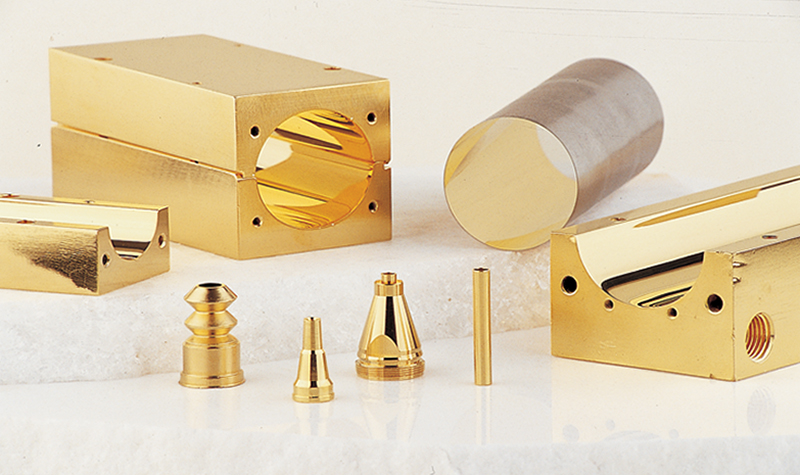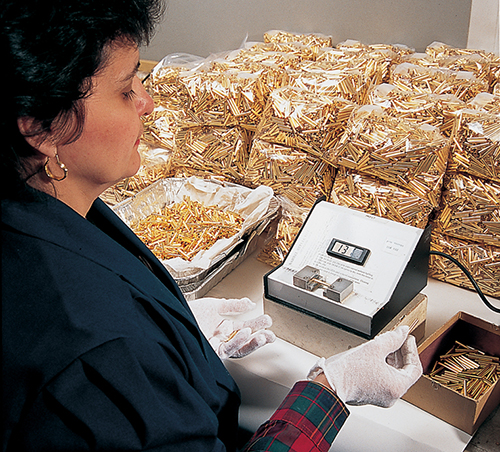
Gold Coating
Reflect on this. Many satellites carry gold-coated mylar sheets to protect them from solar heat. A thin layer of gold on an astronaut's helmet visor fends off dangerous effects of solar radiation. Satellite microelectronics that instantaneously relay data around the globe depend on gold components to ensure reliable, corrosion-resistant and static-free performance.
The growing use of gold in advanced technologies such as microelectronics, telecommunications, optics, aviation and space has increasingly made gold a vital strategic resource in U.S. technological and economic competitiveness.
In 1996, the Mars Global Surveyor blasted off toting a gold-plated telescope mirror, part of a laser device that is to chart the topography of the entire Martian surface over a two year period.
Epner Technology Inc. of Brooklyn, New York rose to the challenge of a NASA Goddard Space Flight Center requirement for the ultimate in electroplated reflectivity needed for the Mars Global Surveyor's Mars Orbiter Laser Altimeter (MOLA). The MOLA mirror, an unusually large one-half meter in diameter, was ground by OCA Applied Optics in Garden Grove, California. Made of beryllium, the MOLA mirror was coated by Epner Technology's Laser Gold® process, specially improved for the project. The resultant mirror coating proved exquisite.
Laser Gold is a proprietary process for electrochemically-deposited gold. In the near infrared wavelengths, Laser Gold's reflectance is an astounding 99.4 percent.
"We are not paranoid about our processes since the real secret in this business is in the controlling of those processes," says Epner Technology owner and CEO, David Epner. "Our strength comes from a lot of years of breaking the back of some really off-beat plating challenges," he says.
The gold coating on the MOLA mirror is a case in point. To give the telescope mirror the needed sensitivity, the Laser Gold coating was essential to mapping operations around Mars. Gold's extremely high-quality reflectivity is critical in the capturing of laser infrared radiation that is bounced back from Mars to the mirror's surface.
"What makes Laser Gold incomparable for the most sophisticated optical and laser applications like the Mars laser altimeter, where the margin for error is absolutely nil, is its extraordinary reflectivity, in combination with its cleanability and virtually perfect reliability and corrosion resistance," Epner says.
Thanks to the NASA push, adds Epner, improved Laser Gold-coated reflectors have found use in an epitaxial reactor built for a large semiconductor manufacturer. The reactor heats the silicon wafers inside a quartz bell jar with infrared energy from some 100 six-kilowatt quartz-halogen lamps. Behind these lamps are an array of Laser Gold -coated water-cooled aluminum extruded reflectors.
The improved reflectivity of these reflectors has dramatically increased lamp life, says Epner, due to the lower power requirements that the reflectors permit. The huge power consumption of these machines was also reduced with this increased efficiency. These reflectors will be sold worldwide to firms like Motorola, Epner says.
Once again, due to NASA's demanding quality needs, Epner's Laser Gold coating has also found use as a waveguide in Braun-Thermoscan's tympanic thermometer.
Epner Technology customers are the foremost fabricators in aerospace, defense, microwave and electronics, optics and semiconductors.
® Laser Gold is a registered trademark of Epner Technologies, Inc.

Using the Laser Gold coating, Braun's temperature sensor provides rapid accurate results.

Each Laser Gold-coated tube used for the tympanic thermometer is inspected for reflectivity and dimensions by hand

Epner technology Inc.'s Laser Gold process is used to coat products, including lasing cavities, used in various surgical instruments. Epner improved its coating process based on modifications it made for a mirror on the Mars Global Surveyor.













